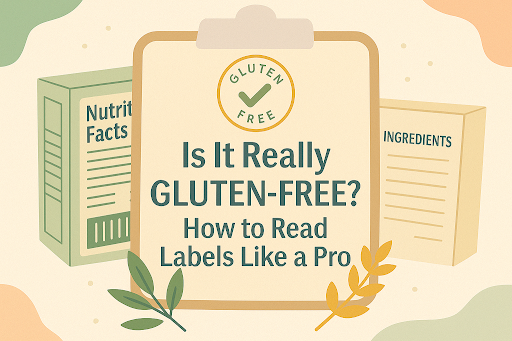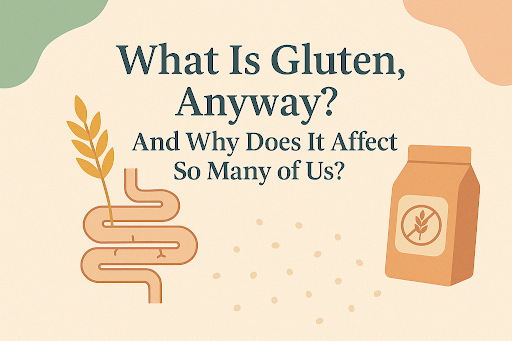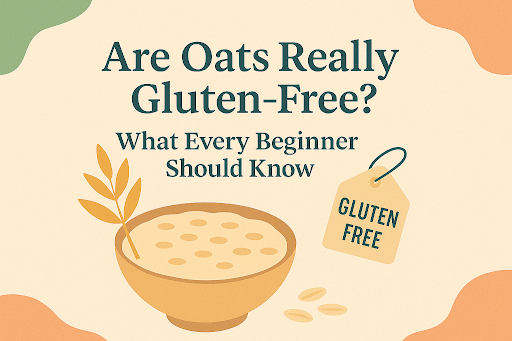“Is It Really Gluten-Free?” — How to Read Labels Like a Pro
by Claire Bennet | Easy Gluten Free Hi friend,Welcome to my Sunday Light Kitchen. If you’re anything like I was during my first gluten-free grocery trip, you’ve probably found yourself frozen in front of the soup aisle, squinting at ingredients you can barely pronounce. “Modified food starch, maltodextrin, natural flavoring” — are those gluten-free? Should I Google them? Should I just cry and go home? No need, love. I’ve been there. And I’m here to walk you through the confusing world of ingredient labels, one gluten-free tip at a time — because yes, this can get easier. What Does “Gluten-Free” Actually Mean? First things first: in the U.S. and Canada, a product can be labeled “gluten-free” if it contains less than 20 parts per million (ppm) of gluten. That’s a teeny-tiny amount, but it’s considered safe for most people with celiac disease and gluten sensitivity. However… not all safe foods are labeled gluten-free. And not all labeled products are 100% safe if you’re sensitive to even trace amounts or worried about cross-contamination (more on that in a bit). So let’s break this down. How to Read Ingredient Labels Like a Gluten-Free Detective Here’s what I always look for before tossing anything into my cart: 1. Look for a Certified Gluten-Free Seal You’ll often spot labels from third-party certifiers like: These stamps are like a gluten-free BFF saying, “You’re safe with me.” 2. Avoid These Common Hidden Gluten Ingredients Even if a product looks safe, these sneaky ingredients might contain gluten: When in doubt, put it down and check for a gluten-free version. For example, tamari is a fantastic gluten-free soy sauce alternative, and I use it all the time in this Gluten-Free Sesame Noodle Bowl. Curious about soy sauce, oats, and other “iffy” ingredients? You’ll love this deep dive: “Are Oats Really Gluten-Free? What Every Beginner Should Know” 3. Don’t Trust “Wheat-Free” Here’s the thing: wheat-free ≠ gluten-free.Wheat is just one source of gluten. Barley, rye, and even certain oats can all be problematic. So unless it says gluten-free, keep scanning. 4. Watch Out for Cross-Contamination Warnings You’ll often see phrases like: If you’re super sensitive or have celiac disease, it’s best to steer clear. I learned this the hard way when I reacted to a snack bar that was technically gluten-free… but processed next to wheat crackers. Need help creating a safe kitchen at home too? Check out my guide: “How to Set Up a Gluten-Free Kitchen (Without Losing Your Mind)” Claire’s Go-To Gluten-Free Pantry Staples I’ve dedicated a full chapter in my Free 7-Day Beginner’s E-Book to pantry essentials, but here are a few I swear by: Download the e-book here for a full grocery checklist + 7-day meal plan: Gluten-Free Made Easy: Your 7-Day Beginner’s Guide to Delicious & Stress-Free Meals Pro Tips for Shopping Smarter (and Faster) Start With These Safe & Delicious Recipes Once you’ve stocked your pantry with trusted products, treat yourself! These are beginner-friendly, 100% gluten-free, and taste like pure joy: Final Thoughts from the Sunday Light Kitchen Going gluten-free can feel overwhelming at first — especially when you’re decoding every ingredient and wondering if you’ll ever eat normally again. But I promise: with a few label-reading skills and the right pantry staples, you’ll be cooking, baking, and living confidently gluten-free in no time. And I’ll be right here, cheering you on — one recipe, one guide, one cozy moment at a time. See you in the next post —Claire Read Next:











